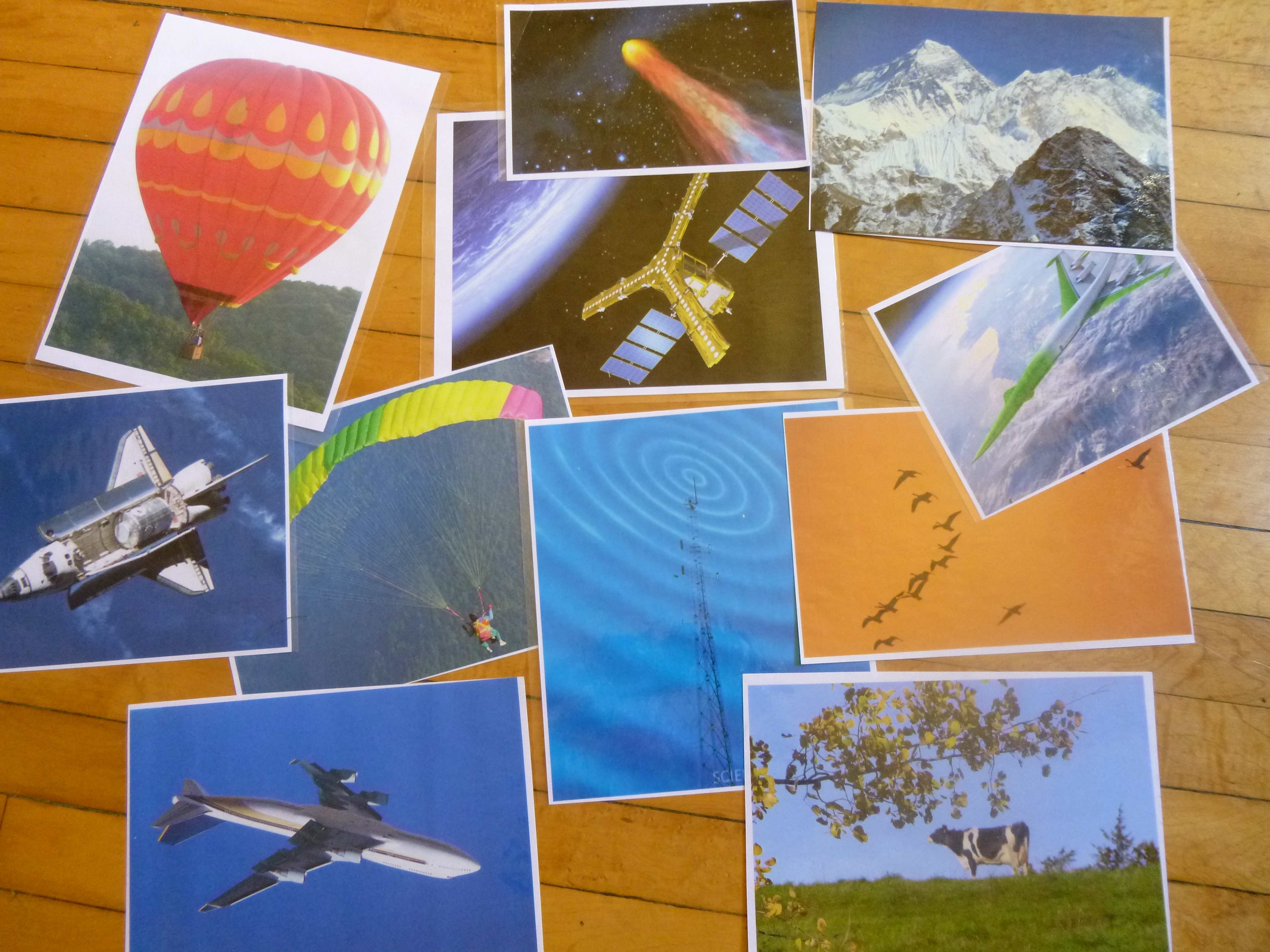
Sep 10, 2012 Group Building, Problem-Solving and Academic Review: Zoom and other Sequencing Challenges
The teachers, corporate trainers, high school advisors and other educators I work with are constantly trying to create a balance of learning in their classes and groups. The challenge is to stretch their time to include building group relationships, facilitating reflection, and promoting important life skills such as communication, problem solving, empathy and understanding different perspectives along with the requirements of covering academic or training curriculum content.
Over the past few months I have been sharing ideas for making the most of your time and combining academic or training content review with team-building and social-emotional learning. This week I am offering my take on the popular team-building activity “Zoom” with variations that connect this great communication, problem solving and group building activity with academics and curricular content review including “Layers of the Atmosphere Line Up” and a “Historical Time Line Shuffle” among others.
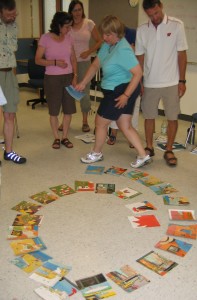
Zoom
Zoom is a compelling picture book illustrated by artist Istvan Banyai with single sided illustrations that zoom out from a picture of a rooster’s comb through a series of sequences ending with the planet earth seen from outer space. Over the past decade or so it has become a very popular tool used by many in the team-building and adventure education field. The book is taken apart, and the pages are used for a group problem-solving activity.
Though there are probably as many variations as there are facilitators, my favorite way to use the book is to:
1) hand a page of the Zoom book to each group member;
2) explain that the page cannot be shown to anyone else, but group members can talk about and describe the picture to others, and
3) challenge the group members to put themselves in order of their pictures without showing them.
This activity is an effective tool for sparking reflection about how groups communicate with each other, varying perspectives, leadership, how they deal with frustration, what roles they take on in the group. When used with school faculty, it can lead to interesting reflections on how teachers often “group” by grade levels or subject areas instead of looking at the bigger picture of school-wide goals. In the business world, the reflective discussion around the activity often centers on the roles participants took in the game and how it relates to their roles in the workplace and the lines of communication that exist or need to be improved. With students, the lessons often center on listening to others, making a plan and designating a leader, dealing with frustration and perspective taking.
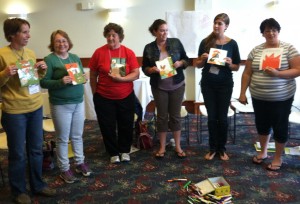
Regardless of the group and setting, it brings to the forefront behaviors and dynamics the group is challenged by and always leads to rich reflective discussions. Keep this in mind when you try it, and give it the time and reflective process necessary to take advantage of the teachable moments that arise.
Vary the Zoom activity to review curricular content:
This activity can be used to review academic content while practicing important group building and social emotional development goals. For example: I use Zoom in language arts classes to explore theme and as a writing prompt. One teacher I worked with had students each take a page from Zoom and write a short paragraph about the picture. Students then put themselves in the sequence of the written story and compared them with the written story.
Layers of the Atmosphere Line Up and Other Sequence Challenges:
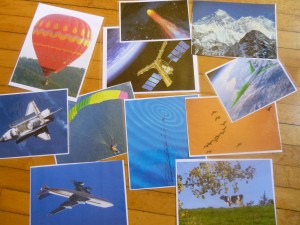 The success of Zoom inspired me to look to other content pieces that are in a sequence such as meiosis and mitosis, historical timelines and lab procedures. A few years ago, I found out that my colleague Jessica Hammond was teaching the layers of the atmosphere to her 7th grade science class. This prompted me to think about creating a Zoom-like sequence challenge to help reinforce and review the students’ knowledge. Using one of Jessica’s review worksheets that listed the layers, I cut it into pieces and handed each student a piece with a layer or something found in that layer. I then asked the students to line up in order of the layers. (There was no need to hide the pictures in this version.) This activity led to some great communication and problem solving along with review, exploration and discussion around the science content.
The success of Zoom inspired me to look to other content pieces that are in a sequence such as meiosis and mitosis, historical timelines and lab procedures. A few years ago, I found out that my colleague Jessica Hammond was teaching the layers of the atmosphere to her 7th grade science class. This prompted me to think about creating a Zoom-like sequence challenge to help reinforce and review the students’ knowledge. Using one of Jessica’s review worksheets that listed the layers, I cut it into pieces and handed each student a piece with a layer or something found in that layer. I then asked the students to line up in order of the layers. (There was no need to hide the pictures in this version.) This activity led to some great communication and problem solving along with review, exploration and discussion around the science content.
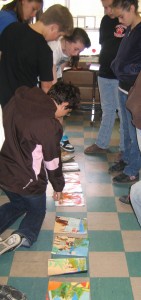
After that day’s success, I printed out pictures of cumulous clouds, satellites, airplanes, birds and the layers of the atmosphere and laminated them for Jessica to use the next year. Since that time I have shared this Layers of the Atmosphere Line-Up with a number of educators who have used this sequencing line up idea to reinforce and review many kinds of lessons or information that involves a sequence or timeline including:
• Historical Timelines
• Biological Life Cycles
• Parts of Speech
• Alphabet(early elementary)
• Scientific Method, Lab Procedures
• Notes/Values in Music
• Atoms and Molecules
• Digestive System, Circulation
• A Timeline of Program Successes (as a reflection on the school year)
Outside of school settings, trainers can use this activity to review or jumpstart discussions about company procedures and protocols. It can be used as a timeline of program successes. On the challenge course, it can even be used with the steps to tying a knot.
Interactive approaches to practicing, recalling, reviewing and discussing academic material such as this one increase engagement. According to new research on the brain and learning, using a variety of teaching and review methods that involve multiple senses helps learners retain and recall information by promoting multiple “learning pathways” for storing and accessing information (Willis, 2006, 2011).
Take on the challenge and think about integrating problem-solving, communication and group building into academic content to increase engagement, retention and enhance learning outcomes. We would love to hear about it!
References and Resources:
Zoom Istvan Banyai (New York: Viking/Penguin Press, 1995)
I first learned about using the Zoom book as team-building activity from colleagues Michelle Cummings and Chris Cavert when we co-lead a ACCT conference workshop in 2002. The Wilderdom website has a nice write up of this activity with variations at www.wilderdom.com.
Brain Research Resources:
“Understanding by Design Meets Neuroscience: Teaching to the Test and Rote Memory Tests as Measurement of Achievement are Not Neuro-logical for Successful, Joyful Learning” 2011 Learning and the Brain Conference Boston.
Willis, Judy. (2006). Research-Based Strategies to Ignite Student Learning. Alexandria, VA:ASCD



Sai Gollapudi
Posted at 00:15h, 30 NovemberWow, loved the extension to Zoom. I do lot of community work, I think this works great in that context. I am definetly inspired. I am already thinking about how to extend my portfolio of activities for my clients. Thanks for sharing.
SaiGo